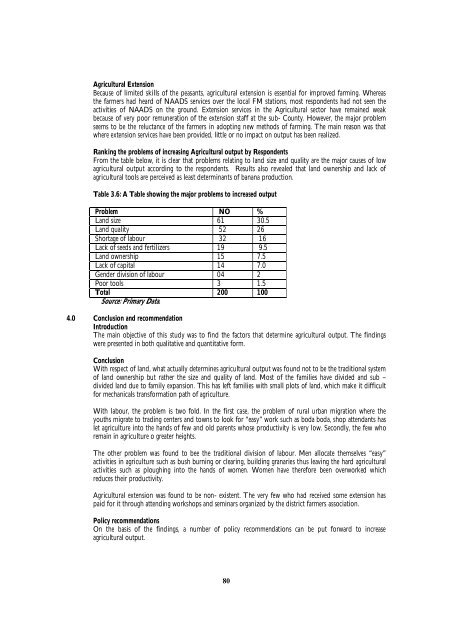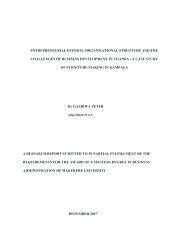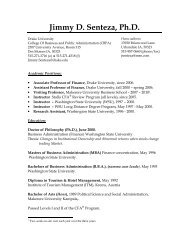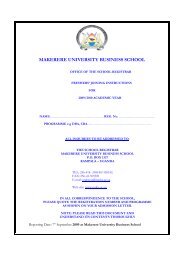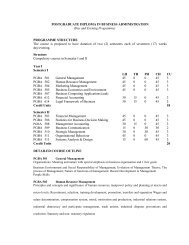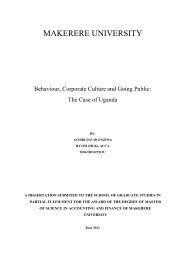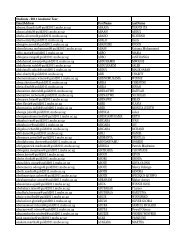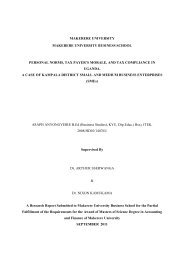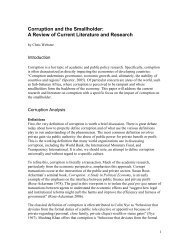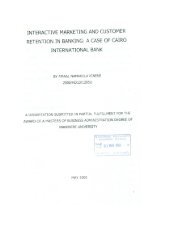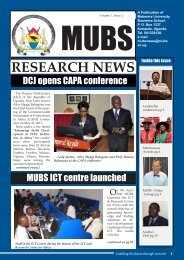13th Annual International Management Conference Proceeding
13th Annual International Management Conference Proceeding
13th Annual International Management Conference Proceeding
Create successful ePaper yourself
Turn your PDF publications into a flip-book with our unique Google optimized e-Paper software.
Agricultural Extension<br />
Because of limited skills of the peasants, agricultural extension is essential for improved farming. Whereas<br />
the farmers had heard of NAADS services over the local FM stations, most respondents had not seen the<br />
activities of NAADS on the ground. Extension services in the Agricultural sector have remained weak<br />
because of very poor remuneration of the extension staff at the sub- County. However, the major problem<br />
seems to be the reluctance of the farmers in adopting new methods of farming. The main reason was that<br />
where extension services have been provided, little or no impact on output has been realized.<br />
Ranking the problems of increasing Agricultural output by Respondents<br />
From the table below, it is clear that problems relating to land size and quality are the major causes of low<br />
agricultural output according to the respondents. Results also revealed that land ownership and lack of<br />
agricultural tools are perceived as least determinants of banana production.<br />
Table 3.6: A Table showing the major problems to increased output<br />
Problem NO %<br />
Land size 61 30.5<br />
Land quality 52 26<br />
Shortage of labour 32 16<br />
Lack of seeds and fertilizers 19 9.5<br />
Land ownership 15 7.5<br />
Lack of capital 14 7.0<br />
Gender division of labour 04 2<br />
Poor tools 3 1.5<br />
Total 200 100<br />
Source: Primary Data.<br />
4.0 Conclusion and recommendation<br />
Introduction<br />
The main objective of this study was to find the factors that determine agricultural output. The findings<br />
were presented in both qualitative and quantitative form.<br />
Conclusion<br />
With respect of land, what actually determines agricultural output was found not to be the traditional system<br />
of land ownership but rather the size and quality of land. Most of the families have divided and sub –<br />
divided land due to family expansion. This has left families with small plots of land, which make it difficult<br />
for mechanicals transformation path of agriculture.<br />
With labour, the problem is two fold. In the first case, the problem of rural urban migration where the<br />
youths migrate to trading centers and towns to look for “easy” work such as boda boda, shop attendants has<br />
let agriculture into the hands of few and old parents whose productivity is very low. Secondly, the few who<br />
remain in agriculture o greater heights.<br />
The other problem was found to bee the traditional division of labour. Men allocate themselves “easy”<br />
activities in agriculture such as bush burning or clearing, building granaries thus leaving the hard agricultural<br />
activities such as ploughing into the hands of women. Women have therefore been overworked which<br />
reduces their productivity.<br />
Agricultural extension was found to be non- existent. The very few who had received some extension has<br />
paid for it through attending workshops and seminars organized by the district farmers association.<br />
Policy recommendations<br />
On the basis of the findings, a number of policy recommendations can be put forward to increase<br />
agricultural output.<br />
80


